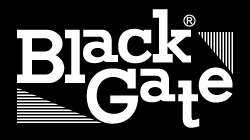| Jelmax Technical Report No. 37 | |
 |
Distortion generated by a capacitor |
|
You may mutter to yourself, "Is distortion generated by a capacitor? I have never heard about that." That kind of story has neither taught in school nor prescribed in JIS standards. There is nothing more important than this fact in the field of modern electronics engineering. A capacitor is made of a pair of electrodesand a dielectric interposed between the electrodes. When a signal is supplied to the capacitor, the dielectric expands and shrinks as all kinds of dielectric do and exhibits a electric distortion curve. The curve is similar to a hysteresis curve of magnetic material. Dielectrics generate a loss and a lot of harmonics due to the non-linear cure. That is what a distortion of a capacitor really in the distortion has relative relationship with a loss tan. The level of the non-linearity of PS, PP, PC, PET, paper, PVF, ceramics and laminated ceramic becomes larger in this order. Although an electrolytic capacitor is located at the position following the paper in the order of the non-linearity, a detailed description is omitted in this report. There is a big difference in the distortion of as high as more than 60dB (1000 times) between tantalum capacitors and polystyrene which are widely used in tuners or high frequency apparatuses. The figure of S/N can be improved by more than 10 dB by simply replacing all the tantalum capacitors with styrene capacitors. You will recognize at last that the distortion generated by capacitors is greatly important by this fact. CTL-1 is an only method for measuring the distortion in which the third harmonic distortion of an input signal is directly measured by supplying the pure input signal power having a frequency of 10 kHz to a capacitor and is capable of directly reading the dB value of distortion generated for a given input. Although there are some articles describing that the distortion is measured by using an ordinary distortion gauge, they are however totally meaningless since it can not measure electric power. As stated in the last report, the distortion (an ion distortion) gives a great influence to electronics circuits through which a signal passes irrespective of whether the distortion is analogue or digital. Sound quality of audio amplifiers is almost decided by the distortion of the capacitors which give a decisive influence to digital circuits such as CD-Players. It brings about impurity in the colors reproduced by color signal circuits of television sets adversely afecting the reproduction of pure and beautiful color pictures. Finished capacitors must he selected carefully for use with respect to their structure, lead wires and other elements because these elements also have relatively great influence to the generation of the distortion. | |